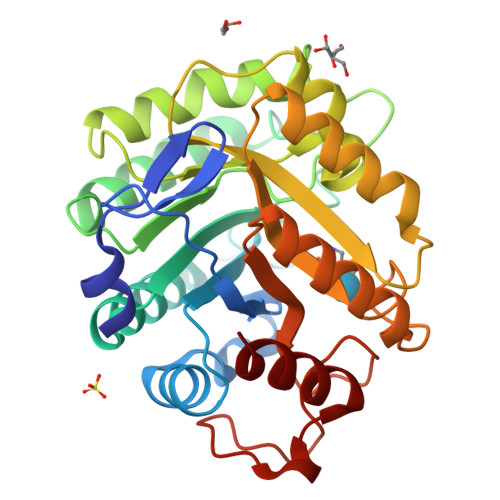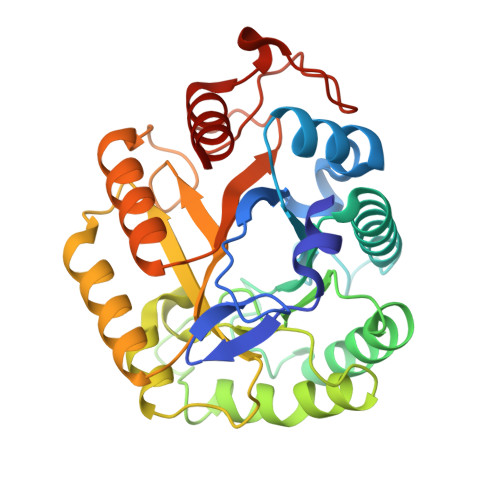Direct Observation of the Protonation State of an Imino Sugar Glycosidase Inhibitor Upon Binding
Varrot, A., Tarling, C.A., Macdonald, J.M., Stick, R.V., Zechel, D.L., Withers, S.G., Davies, G.J.(2003) J Am Chem Soc 125: 7496
- PubMed: 12812472
- DOI: https://doi.org/10.1021/ja034917k
- Primary Citation of Related Structures:
1OCQ - PubMed Abstract:
Glycosidases are some of the most ubiquitous enzyme in nature. Their biological significance, coupled to their enormous catalytic prowess derived from tight binding of the transition state, is reflected in their importance as therapeutic targets. Many glycosidase inhibitors are known. Imino sugars are often potent inhibitors, yet many facets of their mode of action, such as their degree, if any, of transition-state "mimicry" and their protonation state when bound to the target glycosidase remain unclear. Atomic resolution analysis of the endoglucanase, Cel5A, in complex with a cellobio-derived isofagomine in conjunction with the pH dependence of Ki and kcat/KM reveals that this compound binds as a protonated sugar. Surprisingly, both the enzymatic nucleophile and the acid/base are unprotonated in the complex.
Organizational Affiliation:
Department of Chemistry, Structural Biology Laboratory, The University of York, Heslington, York YO10 5YW, United Kingdom.






















